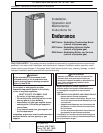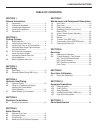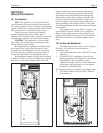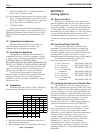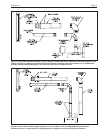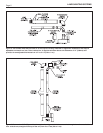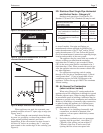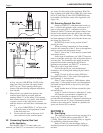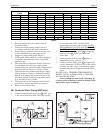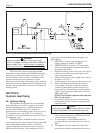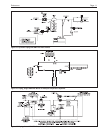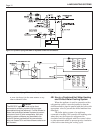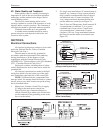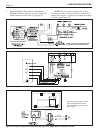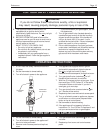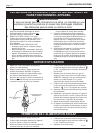
Endurance
Page 7
When appliances are used, the concentric vent
terminals must be at least 12" apart, edge-to-edge (see
Figure "term").
Do not locate the vent terminal where blockage
by snow is a possibility, or where flue products could
strike against building materials and cause
degradation. If the vent terminal location chosen is
less than 18" below an overhang, the 3" vent pipe
must extend to the outside edge of the overhang (see
Figure 6).
2D. Stainless Steel Single Pipe Horizontal
and Vertical Vents - Category IV
Stainless steel special gas Vent listed to U.L.
Standard 1738 and U.L.C. Standard 636 may be used
Figure 7. For Appliances Certified as Direct Vent.
Figure 8. Typical vent installation with 18" or less
overhead clearance to outside.
Minimum clearance from
combustibles (vent) 3" 76mm
Max. flue gas temp. 325°F 163°C
Max. vent pressure 1.5" WC 0.4kPa
Max. equivalent ft. of venting 3" 76mm
(any combination of horizontal diameter diameter
or vertical) 50 equiv. ft. 15.2m
Max. equivalent ft. of venting 100 equiv. ft. 30.5m
(any combination of horizontal
or vertical) 4" diameter 102mm dia.
Table 2. Appliance Venting Design Data.
Figure 9. Multiple Concentric Vent Clearances.
to vent all models. Vent pipe and fittings are
manufactured to these standards by HeatFab, Inc.
under the trade name of Saf-T Vent
®
and by Z-Flex
™
under the trade name of Z-Vent. Follow the Special
Gas Vent manufacturer's instructions regarding design,
location and assembly of the vent system.
The appliance may be vented with any number of
elbows or fittings provided that the maximum
equivalent feet of venting is not exceeded. Elbows
(90°) in the vent system shall be considered to be 5
equivalent feet (1.5m). When vented with special gas
vent, the appliance must not be common vented with
any other appliance.
For applications requiring vertical venting
through a roof, the above limitations apply. Vertical
vents greater than 7' (2.1m) in length must offset a
condensate trap tee p/n 2400-358 adjacent to the
appliance. Utilize vent cap p/n 2400-370 to terminate
vertical venting.
2E. Air Source For Combustion
(when not direct vented)
When using Category IV venting methods the
appliance draws all combustion air through its top and
from the adjacent space. When locating the appliance
in unconfined spaces in buildings, infiltration may be
adequate to provide air for combustion and ventilation.
However, in buildings of unusually tight construction,
or when locating the appliance in a confined space,
additional air should be provided and the following
guidelines must be followed.
1. If the space is in a building of unusually tight
construction, air should be obtained from
outdoors, or from spaces which freely connect
with outdoors.
2. For boilers in confined rooms, two permanent
openings shall be provided - one within 12"
(305mm) of the ceiling, and one within 12"
(305mm) of the floor of each room. Each
opening shall be at least one square inch



